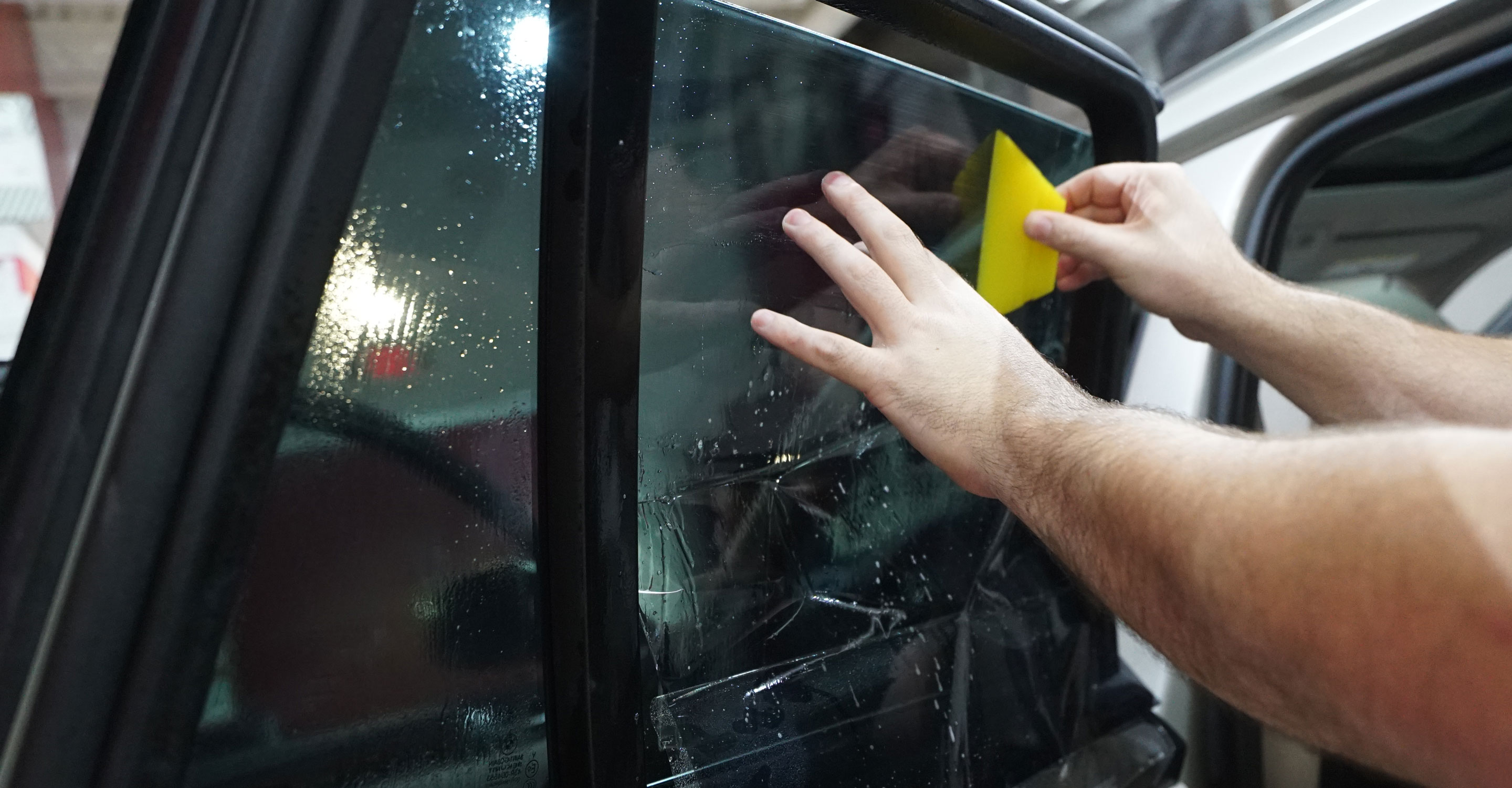When it comes to enhancing the functionality and aesthetics of windows, Pressure Sensitive Adhesive (PSA) Window Film stands out as a versatile and reliable solution. Whether you're looking to improve privacy, enhance safety, reduce energy costs, or elevate the visual appeal of your home, office, or vehicle, PSA window films offer a range of benefits. In this blog, we’ll dive deep into what PSA window film is, how it works, its applications, advantages, challenges, and tips for installation and maintenance. By the end, you’ll have a clear understanding of why this innovative product is gaining popularity across residential, commercial, and automotive sectors.
What is Pressure Sensitive Adhesive Window Film?
Pressure Sensitive Adhesive Window Film is a thin, flexible material applied to glass surfaces, featuring a sticky adhesive layer that bonds to the glass when pressure is applied. Unlike other adhesive types, such as dry adhesives (DA) or static cling films, PSA is tacky to the touch once its protective liner is removed, similar to adhesive tape. This stickiness allows for a quick and strong bond, making it ideal for applications where immediate adhesion is critical, such as automotive windows or security films.
PSA window films are typically made from polyester (PET) or vinyl and come in various forms, including:
- Decorative Films: For privacy and aesthetic enhancement.
- Solar Control Films: To reduce heat and glare.
- Safety and Security Films: To reinforce glass against breakage.
- Automotive Films: For tinting and UV protection in vehicles.
The adhesive in PSA films is often acrylic-based, providing a durable and long-lasting bond that can withstand environmental factors like heat, humidity, and UV exposure.
Related: Ultimate Guide to Outdoor Awnings: UV Protection, Electric Motors, and More
How Does PSA Window Film Work?
The magic of PSA window film lies in its adhesive properties. When the protective liner is removed, the adhesive is exposed, ready to bond to a clean glass surface. The installation process typically involves:
- Surface Preparation: Cleaning the glass thoroughly to remove dirt, dust, and oils.
- Wet Application: Spraying the glass and film with a soapy water solution to allow for positioning adjustments.
- Application: Pressing the film onto the glass, using a squeegee to remove water and air bubbles.
- Curing: Allowing the adhesive to fully bond over time, which can take a few days to weeks depending on conditions.
The pressure applied during installation activates the adhesive, creating a mechanical bond with the glass. This bond is strong enough to hold the film in place for years, often lasting 15+ years in residential or commercial applications.
Applications of PSA Window Film
PSA window films are incredibly versatile, finding use in various settings. Here are some of the most common applications:
1. Residential Use
In homes, PSA window films are popular for:
- Privacy: Frosted or decorative PSA films obscure views while allowing light to pass through, perfect for bathrooms or street-facing windows.
- Energy Efficiency: Solar control films reduce heat gain, lowering cooling costs in summer.
- UV Protection: Blocking up to 99% of harmful UV rays to protect furniture and flooring from fading.
- Safety: Security films hold glass together if shattered, reducing the risk of injury from flying shards.
2. Commercial Use
Businesses use PSA films to:
- Enhance Branding: Custom decorative films with logos or patterns for office partitions or storefronts.
- Improve Comfort: Solar films reduce glare on computer screens and maintain consistent indoor temperatures.
- Increase Security: Thicker safety films protect against break-ins or vandalism.
3. Automotive Use
In vehicles, PSA films are the go-to choice because:
- Quick Bonding: The adhesive sticks instantly to curved glass, ideal for windshields and side windows.
- Durability: Withstands constant vibration, temperature changes, and UV exposure.
- Aesthetics and Functionality: Provides tinting for privacy, glare reduction, and UV protection.
4. Specialty Applications
- Backlit Displays: PSA films with micro-grooved adhesives allow air evacuation for smooth application in signage.
- Medical Settings: Antimicrobial films for hygienic environments.
- Marine and Aviation: Films designed for extreme conditions.
Advantages of PSA Window Film
PSA window films offer several benefits that make them a preferred choice over other adhesive types:
1. Strong and Immediate Adhesion
The tacky nature of PSA ensures a fast and reliable bond, especially on curved or irregular surfaces. This is particularly advantageous in automotive applications where the film must adhere to complex shapes without slipping.
2. Long-Lasting Durability
Once applied, PSA films form a robust bond that can last over a decade, resisting peeling, bubbling, or fading under normal conditions. This durability makes them cost-effective for long-term use.
3. Enhanced Safety
In safety and security films, PSA’s high adhesive strength (up to 10 lbs per ream) holds glass fragments together under impact, turning ordinary glass into shatter-resistant material. This is critical for protecting occupants during accidents, storms, or break-ins.
4. Versatility
PSA films are available in a wide range of styles, from clear to tinted, matte to reflective, allowing for customization based on functional or aesthetic needs.
5. UV Resistance
Many PSA films include UV stabilizers, protecting against degradation and maintaining optical clarity over time. This is especially important for films exposed to direct sunlight.
Challenges of PSA Window Film
While PSA window films have numerous advantages, they also come with some challenges:
1. Installation Difficulty
The sticky adhesive can be tricky to handle, as it may attract dust, dirt, or stick to itself if mishandled. This can lead to installation errors, especially for DIYers. Professional installers often work in teams to manage large PSA films, peeling the liner while spraying mounting solution to prevent premature sticking.
2. Limited Repositioning
Once applied, PSA films are harder to reposition compared to dry adhesive films. Misalignment during installation requires careful correction to avoid wrinkles or bubbles.
3. Removal Challenges
While PSA films are designed for permanent installation, removing them can be labor-intensive, often requiring heat or adhesive removers. This is a consideration for applications where films may need periodic replacement.
4. Higher Cost
PSA films, especially high-performance safety or solar control variants, can be more expensive than static cling or dry adhesive films due to their adhesive strength and manufacturing complexity.
Installation Tips for PSA Window Film
To ensure a successful installation, follow these tips:
- Prepare the Surface: Clean the glass with a lint-free cloth and a solution of soapy water or glass cleaner. Remove any residue or contaminants.
- Work in a Clean Environment: Minimize dust and debris by working in a controlled space, such as a garage or clean room.
- Use a Wet Application: Spray both the glass and the adhesive side of the film with a soapy water solution to slow the bonding process, allowing for adjustments.
- Team Up for Large Films: For big windows, have a partner help peel the liner while you position the film to prevent it from sticking prematurely.
- Squeegee Thoroughly: Use a hard squeegee to remove water and air bubbles, applying firm pressure to activate the adhesive.
- Trim Edges Carefully: Use a sharp utility knife to trim excess film for a clean finish.
- Allow Curing Time: Avoid cleaning the film for at least 30 days to let the adhesive fully cure.
Maintenance and Care
Maintaining PSA window film is straightforward:
- Cleaning: Use a soft cloth or sponge with a non-abrasive cleaner (e.g., soapy water or ammonia-free glass cleaner). Avoid harsh chemicals or abrasive scrubbers.
- Inspection: Periodically check for peeling or bubbling, especially in high-humidity areas.
- Replacement: If the film shows signs of wear or damage, consult a professional for removal and replacement to avoid damaging the glass.
PSA vs. Dry Adhesive: Which is Better?
When choosing between PSA and dry adhesive (DA) window films, consider your project’s needs:
- PSA is ideal for automotive applications, security films, or situations requiring immediate adhesion. It’s less forgiving during installation but offers superior strength.
- DA is better for large, flat glass surfaces in residential or commercial settings, where its non-sticky nature allows for easier handling and repositioning. DA films also provide better optical clarity and are easier to remove.
Ultimately, the choice depends on the application, installer expertise, and desired outcome.
Related: The Critical Role of Air Filters in Modern Factories
Industry Insights and Trends
The window film industry is evolving, with PSA films at the forefront of innovation. Recent trends include:
- Eco-Friendly Films: Manufacturers are developing PSA films with recyclable materials and low-VOC adhesives.
- Smart Films: PSA-based switchable films that change opacity with an electric current for dynamic privacy control.
- Antimicrobial Films: Growing demand in healthcare settings for PSA films with antimicrobial properties.
- Advanced UV Protection: Films that block infrared heat while maintaining visible light transmission for energy efficiency.
Companies like Eastman, 3M, and Klingshield are leading the charge, offering PSA films with enhanced performance characteristics.
Conclusion
Pressure Sensitive Adhesive Window Film is a powerful tool for transforming glass surfaces, offering a blend of functionality, durability, and aesthetics. From enhancing privacy in homes to improving safety in commercial buildings and vehicles, PSA films deliver reliable performance across diverse applications. While installation requires care and precision, the long-term benefits—energy savings, UV protection, and enhanced security—make it a worthwhile investment.
Whether you’re a homeowner tackling a DIY project or a business owner seeking professional solutions, understanding the properties and applications of PSA window film empowers you to make informed decisions. For more information, explore resources from trusted manufacturers like Concord Window Film or Flexfilm, or consult a professional installer to bring your vision to life.
Ready to upgrade your windows? Dive into the world of PSA window film and discover how this innovative product can elevate your space!


.png)



.jpg)

.jpg)






